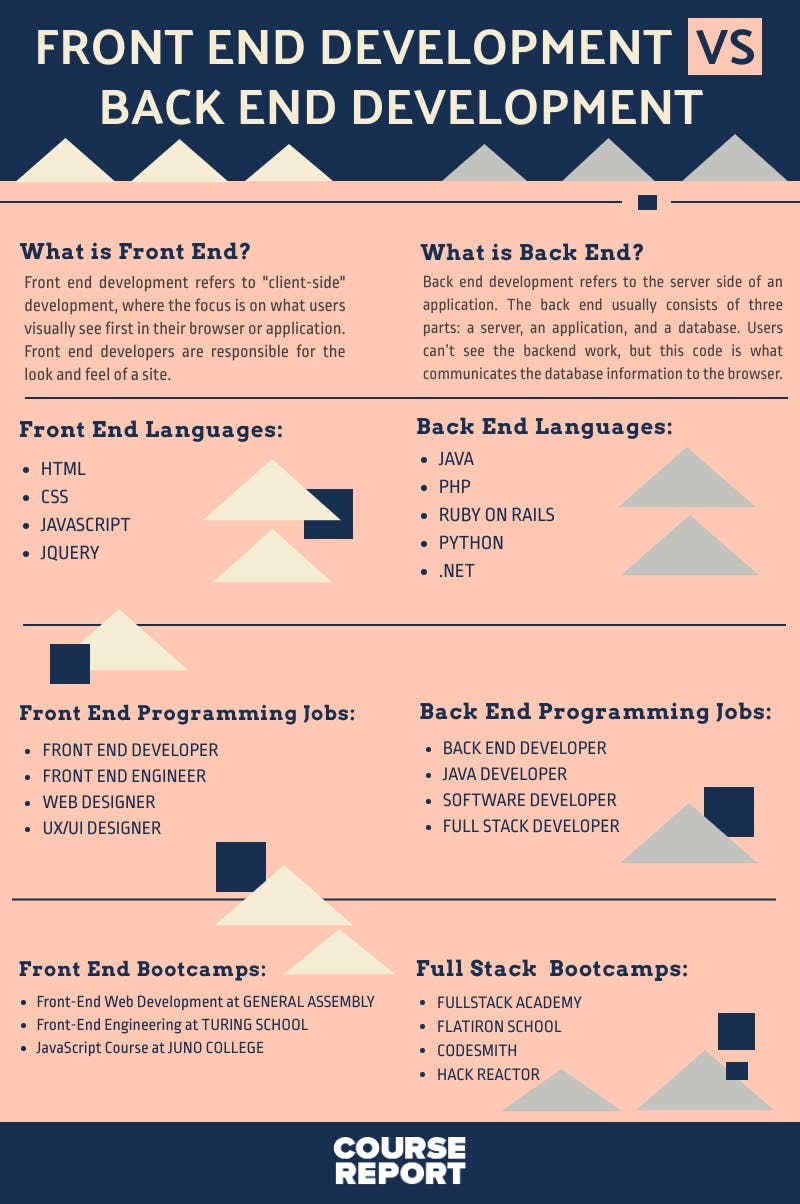Pulse of Information
Your source for the latest insights and updates.
Back-End Development: The Unsung Hero of Web Applications
Uncover the secrets of back-end development—the hidden backbone of web applications that powers your online experience!
The Backbone of Web Applications: Understanding Back-End Development
Back-end development is the backbone of web applications, handling server-side logic and databases that power the functionality of a website. This critical area of web development focuses on the parts of a website that users do not see but are essential for its operation. Back-end developers work with server-side languages such as Python, Ruby, and PHP to create the logic necessary for user requests. Key components of back-end development include databases, servers, and APIs, which work together to ensure data is processed and delivered efficiently to the front end.
Understanding back-end development also involves familiarity with database management, as it stores and retrieves data for web applications. Common database systems like MySQL and MongoDB allow developers to manage data effectively and ensure that it is secure and accessible. Moreover, leveraging frameworks such as Node.js or Django can significantly streamline the development process by providing pre-built modules and enhanced functionality. As web applications evolve, the role of back-end development becomes increasingly important in delivering seamless user experiences and robust application performance.

Common Misconceptions About Back-End Development Revealed
Back-end development is often surrounded by misconceptions that can lead to confusion about its role in the web development process. One common belief is that back-end developers solely work on server infrastructure and data management. While these aspects are indeed crucial, the role of a back-end developer extends beyond just managing databases and servers. They are also responsible for creating the logic that powers web applications, handling user authentication, and ensuring smooth communication between the front-end and back-end. This holistic approach is essential for building functional and responsive websites.
Another misconception is that learning back-end development is excessively complex and only suited for those with deep programming knowledge. While it's true that having a solid foundation in programming languages like Java, Python, or Ruby is beneficial, many resources exist that can aid beginners in grasping these concepts. With the rise of user-friendly frameworks and robust online learning platforms, getting started with back-end development has never been easier. Moreover, a creative mindset and problem-solving skills can be just as important as coding proficiency, making this field accessible to a wider range of aspiring developers.
How Back-End Development Empowers Seamless User Experiences
Back-end development is the backbone of any successful web application, as it is responsible for managing the server, databases, and application logic. By utilizing robust frameworks and programming languages, back-end developers create systems that handle data efficiently and securely. This ensures that users can seamlessly interact with front-end elements without experiencing delays or errors. As a result, back-end development plays a crucial role in crafting an engaging and intuitive user experience that keeps visitors coming back for more.
Additionally, back-end development enables the integration of various APIs and third-party services, which enhances the functionality of web applications. By connecting different systems, developers can offer features such as real-time updates, personalized content, and streamlined processes. These functionalities not only improve user experience but also contribute to increased user satisfaction and retention. In today's digital landscape, leveraging back-end development to empower seamless user experiences is essential for businesses aiming to thrive online.